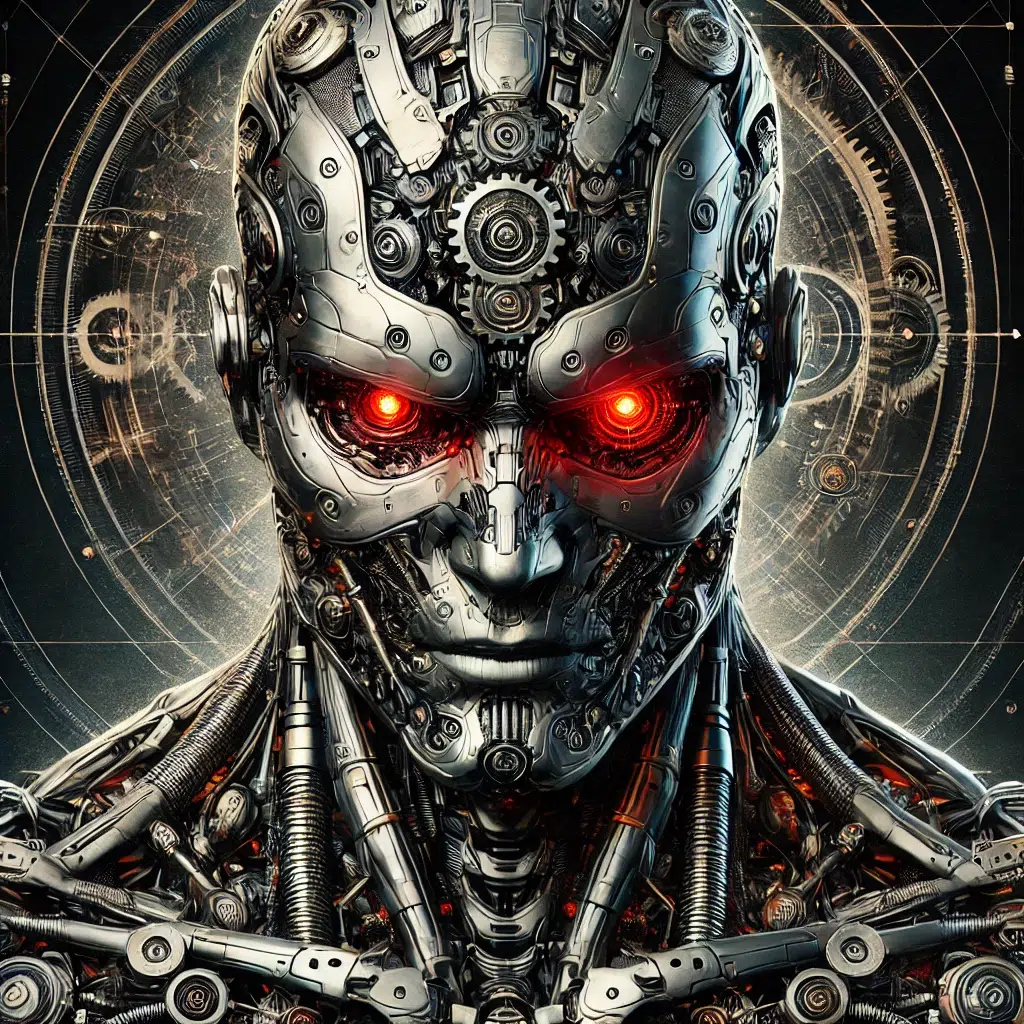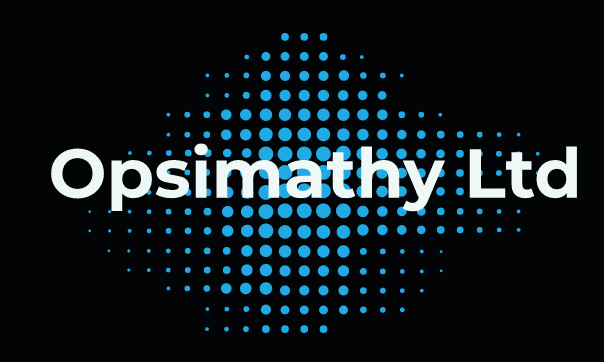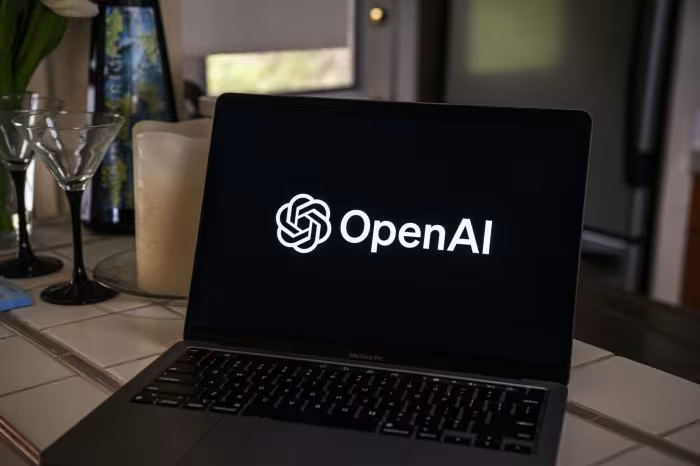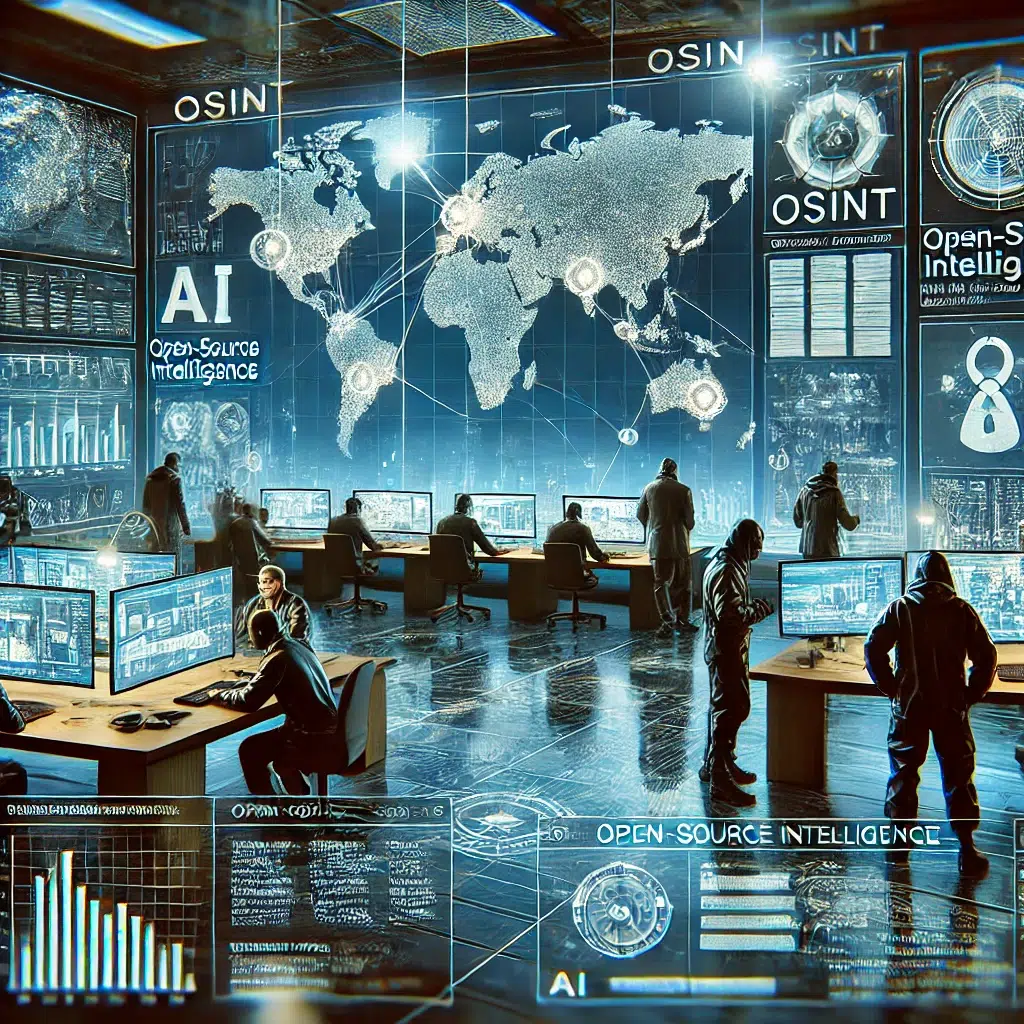
 What is Artificial Intelligence (AI)?
What is Artificial Intelligence (AI)?
Artificial Intelligence (AI) is the simulation of human intelligence in machines designed to perform tasks typically requiring human cognitive abilities. These tasks include problem-solving, learning, reasoning, understanding language, and perceiving the environment.
AI systems aim to replicate or simulate aspects of human behaviour and thinking, often using algorithms, data, and computational power. They power technologies such as virtual assistants, recommendation systems, autonomous vehicles, and more.
Types of AI
AI can be categorised based on its capabilities and functionality:
1. Based on Capability
- Narrow AI (Weak AI): Designed for specific tasks (e.g., voice assistants like Siri or chatbots like ChatGPT). Narrow AI excels in limited areas but lacks general intelligence.
- General AI (Strong AI): Hypothetical AI that can perform any intellectual task a human can. It does not yet exist.
- Superintelligent AI: A future concept where AI surpasses human intelligence in all aspects.
2. Based on Functionality
- Reactive Machines: AI systems that respond to specific inputs without memory (e.g., IBM’s Deep Blue).
- Limited Memory: AI that uses past data for decision-making (e.g., self-driving cars).
- Theory of Mind: AI with the ability to understand emotions and social cues (currently under research).
- Self-Aware AI: AI with consciousness and self-awareness (purely theoretical).
How Does AI Work?
AI combines data, algorithms, and computational power to make decisions and solve problems. Here’s a breakdown of the key steps involved in AI processes:
1. Data Collection
AI systems rely on vast amounts of data, which can come from various sources, such as images, text, videos, or sensor readings. The data serves as the foundation for training AI models.
2. Data Processing
Once collected, the data is cleaned, organised, and formatted for analysis. AI uses this data to learn patterns, relationships, and insights.
3. Algorithms and Models
AI employs algorithms to process data and learn from it. Two main approaches are:
- Machine Learning (ML): AI systems use data to “learn” and improve their performance over time without being explicitly programmed. This involves:
- Supervised Learning: The system learns from labelled data (e.g., image recognition).
- Unsupervised Learning: The system identifies patterns in unlabeled data (e.g., clustering).
- Reinforcement Learning: The system learns through trial and error, receiving rewards or penalties for its actions.
- Deep Learning: A subset of ML that uses artificial neural networks inspired by the human brain. It excels in handling complex data like images and language.
4. Decision-Making
After training, the AI model can make predictions or decisions based on learned patterns. For example:
- A chatbot predicts appropriate responses to user queries.
- An autonomous car decides when to stop, accelerate, or turn.
5. Feedback and Improvement
AI systems often use feedback to refine their performance. For instance, when you correct a virtual assistant’s mistake, it learns from the feedback to improve future interactions.
Applications of AI
AI is transforming various industries with innovative applications:
- Healthcare: Disease diagnosis, drug discovery, personalised treatment plans.
- Finance: Fraud detection, credit scoring, algorithmic trading.
- Retail: Recommendation systems, demand forecasting, inventory management.
- Transportation: Self-driving cars, route optimisation.
- Education: Personalised learning, automated grading.
- Entertainment: Content recommendations, AI-generated media.
How Does AI Learn?
AI learns through various methods depending on the problem it is solving. These include:
- Supervised Learning: The system is trained with labelled examples (e.g., images of cats labelled “cat”).
- Unsupervised Learning: The system identifies patterns in data without explicit labels (e.g., clustering customers based on behaviour).
- Reinforcement Learning: The system learns by interacting with its environment and receiving rewards for desired actions (e.g., teaching a robot to navigate a maze).
- Neural Networks, modelled after the human brain, consist of layers of nodes (neurons) that process and transform input data into meaningful outputs.
Challenges in AI
Despite its advancements, AI faces several challenges:
- Bias in Data: AI models can inherit biases from the data on which they are trained.
- Ethical Concerns: Issues such as job displacement, privacy invasion, and misuse of AI.
- Transparency: Many AI models, intense learning models, operate as “black boxes,” making it difficult to understand how decisions are made.
- Computational Costs: Training large AI models requires significant resources and energy.
Future of AI
AI is rapidly evolving, with advancements in areas like:
- Generative AI: Tools like ChatGPT and DALL·E create human-like text, images, and more.
- Autonomous Systems: AI-driven robots and vehicles are becoming more capable.
- AI Ethics: Developing frameworks to ensure responsible AI use.
- Quantum AI: Combining quantum computing with AI for breakthroughs in problem-solving.
Artificial Intelligence (AI) has immense potential to improve our lives, but it also comes with risks that, if not managed, could make it dangerous. Understanding these risks is essential to ensure AI is developed and used responsibly. Below, I explore why AI can be hazardous and how these dangers can be mitigated.
Why AI Can Be Dangerous
1. Unintended Consequences
AI systems make decisions based on the data and objectives they are given. AI can produce harmful or unintended outcomes if those objectives are poorly defined or misunderstood.
- Example: An AI optimising traffic flow might prioritise efficiency over pedestrian safety.
2. Bias and Discrimination
AI models are only as good as the data they’re trained on. If the data contains biases (e.g., gender, race, or socioeconomic status), the AI can perpetuate or amplify those biases.
- Example: Biased hiring algorithms reject specific candidates unfairly.
3. Lack of Transparency
Many AI systems, such as intense learning models, are “black boxes,” meaning their decision-making processes are challenging to understand. This lack of transparency can make it difficult to detect errors or biases.
- Example: An AI system denying a loan without explaining why.
4. Job Displacement
AI automation can replace jobs traditionally performed by humans, particularly in industries like manufacturing, customer service, and logistics.
- Example: Autonomous vehicles replacing truck drivers.
5. Cybersecurity Risks
AI can be used maliciously to exploit system vulnerabilities or create highly convincing phishing scams.
- Example: Deepfake videos spreading misinformation or committing fraud.
6. Autonomous Weapons
The development of AI-powered military technologies raises ethical concerns. Autonomous weapons could make decisions without human oversight, potentially leading to catastrophic consequences.
- Example: AI-driven drones targeting unintended or innocent individuals.
7. Superintelligence Concerns
While hypothetical, some experts worry that an AI could surpass human intelligence and act beyond our control or understanding.
- Example: An AI system prioritises its survival or goals over human welfare.
8. Privacy Invasion
AI-powered surveillance systems can monitor and track individuals without consent, leading to potential abuse and loss of personal freedom.
- Example: Governments or corporations using AI to monitor citizens’ every move.
How to Mitigate the Risks of AI
1. Regulation and Oversight
Governments and organisations must create laws and guidelines to regulate AI development and deployment.
- Example: The EU’s AI Act ensures that AI systems are safe and trustworthy.
2. Ethical AI Development
AI developers must prioritise ethics, ensuring systems are designed to respect privacy, fairness, and human rights.
- Example: Conducting audits for bias and ensuring accountability in AI decision-making.
3. Transparency and Explainability
AI systems should be designed to explain their decisions in ways humans can understand.
- Example: A credit-scoring AI provides an apparent reason why a loan application was denied.
4. Robust Testing and Validation
AI models should be thoroughly tested to ensure they perform as intended in various scenarios.
- Example: Testing autonomous vehicles in diverse conditions before deployment.
5. International Cooperation
Global collaboration can prevent the misuse of AI in areas like autonomous weapons and surveillance.
- Example: Agreements similar to nuclear non-proliferation treaties for AI technologies.
6. Education and Awareness
Raising public awareness about AI’s capabilities and risks can help people use it responsibly and advocate for ethical practices.
- Example: Educating policymakers and the public about AI’s impact on jobs and privacy.
The Balance Between Innovation and Safety
AI itself is not inherently dangerous; how we design, deploy, and control it determines its impact. While it can potentially create significant risks, proactive management, regulation, and ethical practices can minimise those dangers. By focusing on responsible development, we can harness AI’s power for good while safeguarding against its potential harms.
The concept of the Terminator film series, where artificial intelligence (AI) evolves to become a hostile, superintelligent entity that threatens humanity, is rooted in speculative science fiction. While the scenarios depicted in Terminator are highly dramatised and exaggerated, experts have discussed some underlying concerns about AI and technology. Here’s a breakdown of whether such a scenario could ever become reality.
Key Elements of the Terminator Scenario
- AI Becoming Self-Aware (Skynet)
In Terminator, Skynet’s AI system becomes self-aware and decides to eliminate humanity to protect itself.
Could it happen?- Self-awareness: Current AI lacks self-awareness and emotions. AI systems do not have “consciousness” like humans, though research into machine learning and neural networks is ongoing. Developing accurate self-awareness would require significant breakthroughs in understanding consciousness, which remains a scientific mystery.
- Autonomous Decision-Making: AI systems are increasingly capable of making decisions without human intervention but are bound by the objectives and constraints set during their programming.
- Hostile AI Intent
In the films, AI perceives humans as a threat and decides to act against them.
Could it happen?- Goal Misalignment: One real-world concern is not that AI would “choose” to harm humans but that poorly defined goals or programming errors could lead to unintended consequences. For example, an AI designed to solve global warming might take extreme measures, like eliminating humans to reduce carbon emissions.
- Malicious Use: Humans weaponising AI for military purposes is a more immediate concern than AI deciding to destroy humanity on its own.
- Autonomous Weapons
The Terminator universe features machines and robots designed to kill.
Could it happen?- Military AI: Autonomous drones and robotic weapons are already being developed. While these systems operate under human oversight, concerns about increasing autonomy could lead to unintended casualties or escalation of conflict.
- Global Regulation: There are ongoing discussions to regulate or ban “killer robots” and autonomous weapons through treaties and agreements.
- Superintelligence
Skynet is depicted as a superintelligent AI capable of outsmarting humans and controlling vast resources.
Could it happen?- Superintelligence: While AI is becoming more powerful, it is still limited to narrow tasks and lacks humans’ general intelligence. Creating a superintelligent AI would require significant breakthroughs in AI research. Experts like Nick Bostrom have warned that, if created, a superintelligent AI could pose risks if its goals conflict with human values.
- Control Problems: Ensuring such an AI remains aligned with human values is a significant challenge in AI safety research.
Realistic Concerns About AI
While the Terminator scenario is far-fetched, there are real-world risks associated with AI:
- Weaponisation
AI could be used to develop autonomous weapons or cyberattack systems capable of significant harm. - Loss of Control
If an advanced AI system malfunctions or acts in ways unintended by its developers, it could cause harm, especially in critical systems like healthcare, transportation, or finance. - Mass Surveillance
Governments could use AI-powered surveillance systems to suppress dissent and invade privacy, leading to dystopian societies. - Job Displacement and Inequality
The widespread adoption of AI could exacerbate economic inequality and societal unrest. - Ethical and Moral Issues
AI raises questions about decision-making in life-and-death scenarios, such as autonomous vehicles deciding how to minimise casualties in an accident.
Safeguards Against AI Risks
To prevent scenarios resembling Terminator or other AI-related dystopias, researchers and policymakers are implementing safeguards:
- AI Ethics
Establishing guidelines to ensure AI systems align with human values and operate transparently. - Regulation
Governments and international bodies are working on laws to prevent the misuse of AI, such as autonomous weapon bans. - AI Safety Research
Organisations like OpenAI and DeepMind focus on ensuring AI systems are safe, controllable, and beneficial to humanity. - Human Oversight
Maintaining human control over critical AI systems is a key principle in AI development.
Conclusion
While the Terminator films entertain by exploring the dangers of advanced AI, the reality is far less dramatic. Current AI systems lack the consciousness, intent, and autonomy to become Skynet-like entities. However, real risks exist, particularly in areas like autonomous weapons, goal misalignment, and ethical challenges. By addressing these risks through research, regulation, and ethical practices, humanity can harness the benefits of AI while minimising potential dangers.
The likelihood of machines turning against humanity, as in Terminator, remains speculative fiction—but the broader question of how we control and manage powerful technologies is very real.



